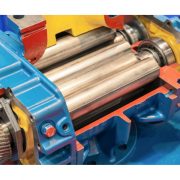Safety is always an important issue within the modern workplace. This is particularly the case when employees are constantly exposed to equipment and machinery that could pose a threat to their physical welfare. While there are numerous protocols already established to make certain that the correct measures are taken, additional levels of security can sometimes be required. This is one of the main intentions of installing what is known as a lockout kit. Let’s take a quick look at why this type of equipment is so very important, what it is used for and some of the common situations which could warrant its presence.
Lockout Kits: A Basic Overview
The principle behind a lockout kit is rather simple. As its name already suggests, this kit will lock specific areas of machinery shut so that they cannot be accessed by personnel. There are several instances which are often associated with lockout procedures. A handful of common examples will include:
- When a piece of machinery is not functioning properly.
- If specific safety devices such as hand guards have been removed.
- If the equipment is undergoing routine maintenance.
Lockout kits are normally brightly coloured and they will contain specific warnings so that employees (and even the public) will be aware of any danger. Lockout-tagout kits are also designed to render a specific piece of equipment or machinery inoperable.
The Features of a Typical Lockout Kit
While the exact specifications will vary depending upon the manufacturer and the intentions of the device, a lockout kit is constructed in a few different ways. The most common is a physical barrier so that a specific device cannot be activated.
Examples here can include a padlock attached to a mechanism which prevents the movement of a device such as a lathe. The second (referred to as a tagout kit) is a brightly coloured tag which is placed above an item such as a switch. This will warn workers that a hazard exists and that the switch should not be activated. There can also be times when both methods are used in conjunction. Only authorised personnel will be able to remove the kit once the problem has been resolved.
Common Instances When a Lockout Kit May Be Required
Now that we have a general overview of the main purpose and design of lockout kits, when should they be deployed? The most common situations include circumstances when the physical activation of a device may lead to grievous bodily harm. Some examples here can include (but are not limited to):
- Units that deal with hydraulic pressure.
- Pneumatic and compressed air systems.
- Machines under thermal pressure or which generate heat.
- Mechanical devices such as table saws, cold forging machines and brake presses.
- Electrical terminals including circuit panels and outlets.
In any of these cases, a technician will first isolate the sources of power to a certain unit. A lockout kit is then put in place; generally, around areas which would normally be accessed by employees. This same technician will be responsible for the key and keep it in his or her possession always. The technician is therefore the only one authorised to remove the kit once the machinery has been serviced or upgraded.
Multiple Worker Concerns
There are many times when several workers will be operating a specific piece of machinery at different times. This often occurs within large environments such as industrial plants and warehouses. A variant known as a group lockout can be utilised in such a scenario. As opposed to a single padlock, this lockout kit is instead comprised of a folding clamp with different holes. A padlock is inserted into each hole. Every worker must therefore remove his or her lock before the unit can be accessed.
These are some of the reasons why lockout kits will be used within the modern workplace. Lockouts are essential to guarantee the safety of all employees and to make certain that machinery cannot be activated if it is undergoing repairs or timely maintenance procedures.












Comments